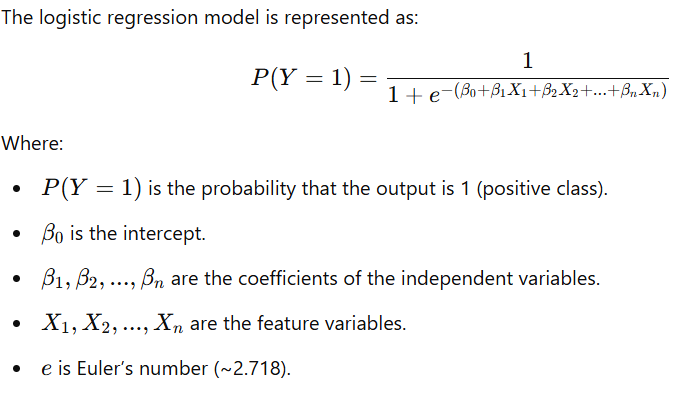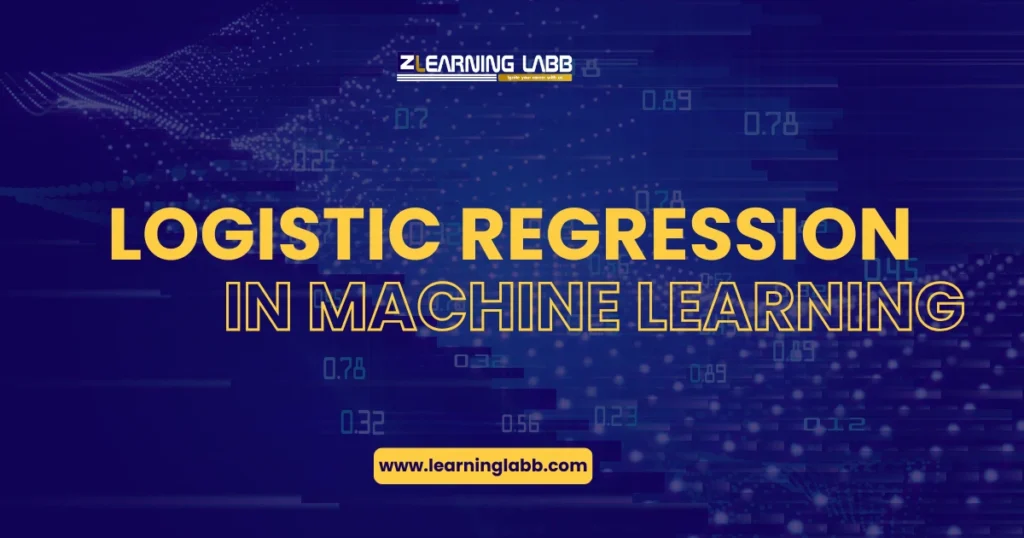What Is Logistic Regression In Machine Learning: There is no debate that machine learning is transforming industries, automating decision-making, and improving efficiency. One of the most fundamental and widely used algorithms in machine learning is logistic regression. But what exactly is logistic regression in machine learning?
Logistic regression is a classification algorithm that predicts categorical outcomes. Unlike linear regression, which is used for continuous values, logistic regression is used when the dependent variable is binary (Yes/No, 0/1, True/False).
It is widely used in medical diagnostics, fraud detection, marketing, and many other fields. Read on to know more about logistic regression in machine learning…
What Is Logistic Regression In Machine Learning?
Logistic regression is a supervised learning algorithm used for binary classification tasks. It models the relationship between the independent variables (features) and the probability of a particular class (0 or 1).
Unlike linear regression, which predicts continuous values, logistic regression applies the sigmoid function (logistic function) to restrict the output between 0 and 1, making it ideal for classification.
Equation of Logistic Regression

The sigmoid function ensures the output remains between 0 and 1, making it a probability score.

Types of Logistic Regression
Logistic regression is not limited to binary classification. It extends to multiclass problems as well. Here are the major types:
- Binary logistic regression – Used when the target variable has only two classes (Yes/No, 0/1).
- Multinomial logistic regression – Used for multi-class classification where there are more than two categories but no natural order.
- Ordinal logistic regression – Used when the target variable has more than two categories with an inherent order (e.g., low, medium, high).
Each of these types plays a significant role in different real-world applications.
How Logistic Regression Works In Machine Learning?
Logistic regression works in three key steps:
1. Data Preprocessing & Feature Engineering
- Collect and clean the data.
- Select relevant features (feature importance for logistic regression is crucial for model accuracy).
- Convert categorical variables into numerical form.
2. Model Training Using the Cost Function
The cost function of logistic regression helps measure how well the model fits the data. It is given by:

3. Model Prediction & Evaluation
- Once trained, the model predicts outputs for new inputs.
- The model’s performance is evaluated using metrics like accuracy, precision, recall, and F1-score.
Assumptions Of Logistic Regression
Before applying logistic regression, some fundamental assumptions must be satisfied:
- Linear relationship – The independent variables should have a linear relationship with the log-odds of the dependent variable.
- No multicollinearity – Independent variables should not be highly correlated.
- Large sample size – Logistic regression performs best with large datasets.
- Binary or ordinal target variable – The dependent variable should be categorical.
Ignoring these assumptions can lead to poor model performance.
Advantages Of Logistic Regression
Logistic regression offers several benefits:
- Simple & easy to implement – Requires less computational power than complex models.
- Interpretable – Provides clear insights into feature importance.
- Works well for small datasets – Performs well even when data is limited.
- Probability scores – Outputs probabilities instead of just class labels.
According to Andrew Ng, a leading AI researcher, “Logistic regression remains one of the most interpretable and robust models in machine learning.”

Examples Of Logistic Regression In Real Life
Logistic regression is used in various industries:
- Medical diagnosis – Predicting diseases based on symptoms.
- Fraud detection – Identifying fraudulent transactions.
- Marketing & customer segmentation – Predicting whether a customer will buy a product.
- Spam detection – Classifying emails as spam or not spam.
Companies like Amazon, Netflix, and Google use logistic regression for personalized recommendations.
When Is Logistic Regression Used?
Logistic regression is the go-to algorithm when:
- The problem requires classification (e.g., Yes/No, 0/1).
- The dataset is small or medium-sized.
- The independent variables are numerical or categorical.
- Interpretability of results is important.
On A Final Note…
So, what is logistic regression in machine learning? It’s a powerful yet simple algorithm used for classification tasks. With a clear understanding of its assumptions, cost function, types, and applications, you can leverage logistic regression to solve real-world problems.
If you’re serious about learning machine learning, start with logistic regression and build your way up! Join Ze Learning Labb now!





